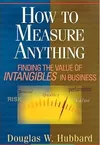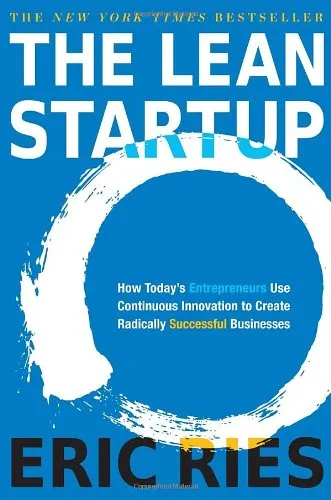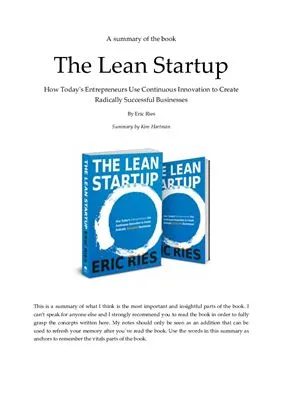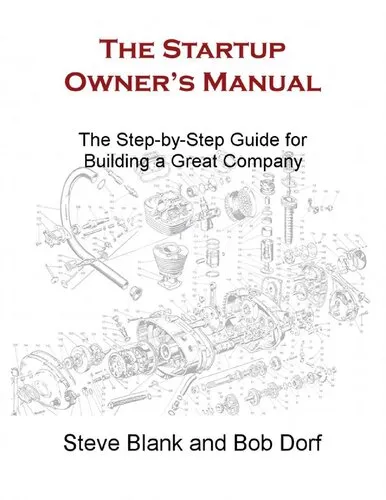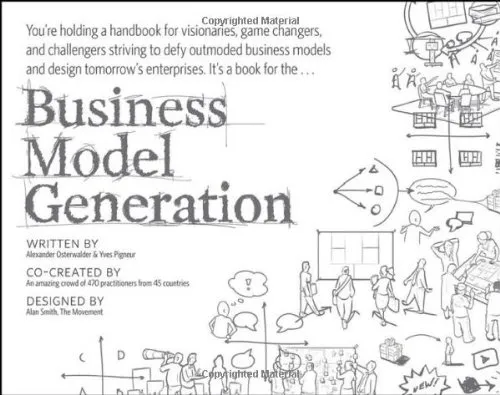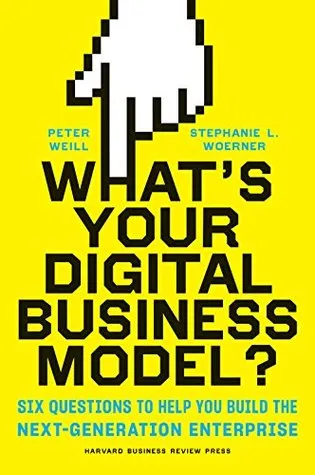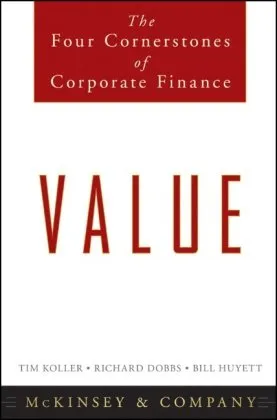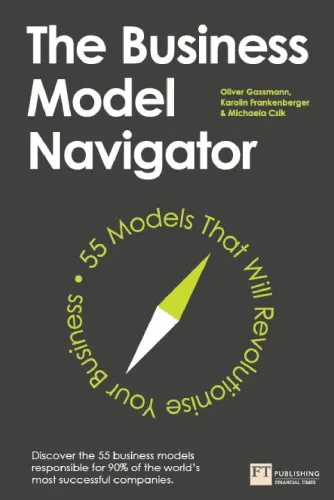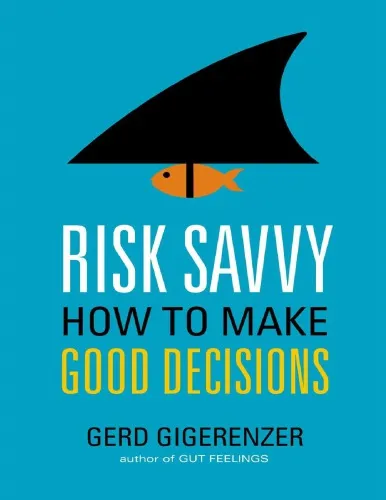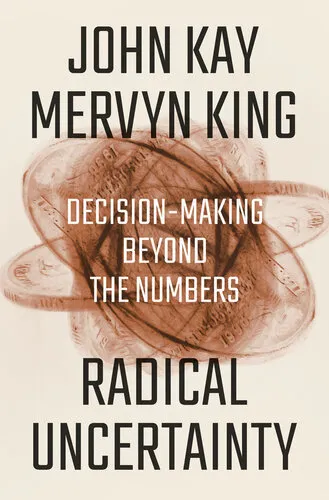How to Measure Anything: Finding the Value of Intangibles in Business
3.9
بر اساس نظر کاربران

شما میتونید سوالاتتون در باره کتاب رو از هوش مصنوعیش بعد از ورود بپرسید
هر دانلود یا پرسش از هوش مصنوعی 2 امتیاز لازم دارد، برای بدست آوردن امتیاز رایگان، به صفحه ی راهنمای امتیازات سر بزنید و یک سری کار ارزشمند انجام بدینکتاب های مرتبط:
Persian Summary
مقدمه
کتاب "How to Measure Anything: Finding the Value of Intangibles in Business" نوشته Hubbard D.W. یکی از آثار معتبر در زمینه مدیریت و اقتصاد است که بر اهمیت اندازهگیری و ارزشگذاری داراییهای غیرقابل لمس در تجارت متمرکز است. این کتاب به خوانندگان نشان میدهد که چگونه حتی مواردی که به نظر اندازهگیریناپذیر میآیند را میتوان ارزیابی و ارزشگذاری کرد. در ادامه، به بررسی دقیقتر محتوای این کتاب میپردازیم.
خلاصه کتاب
این کتاب بر مبنای این دیدگاه نگاشته شده است که میتوان هر چیز را اندازهگیری کرد و هیچ چیز به طور مطلق غیرقابل اندازهگیری نیست. نگارنده با استفاده از تکنیکهای آماری و تحلیلی متنوع، به خوانندگان آموزش میدهد که چگونه با استفاده از اطلاعات موجود، فرضیات خود را به طور عملی آزمایش کنند. کتاب شامل بخشهایی است که به روشهای علمی و ریاضی برای اندازهگیری Intangibles مانند رضایت مشتری، ریسک پروژه و بهرهوری کارکنان میپردازد.
نکات کلیدی
- هرچیزی قابلیت اندازهگیری دارد، حتی اگر به طور طبیعی مشهود نباشد.
- استفاده از روشهای غیرمستقیم و پروکسی میتواند در ارزیابی موارد غیرمتمرکز مفید باشد.
- درک Intangibles میتواند منجر به تصمیمگیریهای آگاهانهتر در کسبوکار شود.
- ارزشگذاری صحیح Intangibles میتواند به بهرهوری و سودآوری بلندمدت کمک کند.
نقلقولهای معروف از کتاب
"اگر چیزی برای تصمیمگیری مهم است، پس دارای عدد است."
"هر چیزی که شما میتوانید به طور غیرمستقیم اندازهگیری کنید، قابل بهبود است."
چرا این کتاب مهم است؟
در دنیای امروز کسبوکارها به طور مداوم به دنبال روشهایی هستند تا تصمیمگیریهای خود را دقیقتر و مؤثرتر طراحی کنند. با اینکه بسیاری از سازمانها بر اساس دادههای معتبر تصمیمگیری میکنند، هنوز هم بسیاری از تصمیمها براساس شهود و فرضیات بدون پشتوانه گرفته میشود. این کتاب به مدیران و تحلیلگران ابزاری میدهد تا با اطمینان بیشتر در مورد Intangibles صحبت کنند و تصمیمگیریهای بهتری داشته باشند. این موضوع به ویژه برای شرکتهای بزرگ و پیچیده که با حجم عظیمی از دادهها روبهرو هستند، از اهمیت بالایی برخوردار است.
Introduction to "How to Measure Anything: Finding the Value of Intangibles in Business"
In today's complex business environment, measuring the seemingly immeasurable is not only possible but essential. "How to Measure Anything: Finding the Value of Intangibles in Business," authored by Doug Hubbard, offers a groundbreaking approach to quantifying the unquantifiable and unveiling the potential value of elements that companies often struggle to gauge. This book challenges conventional wisdom and provides readers with practical tools to evaluate and make data-driven decisions where uncertainty prevails.
Detailed Summary of the Book
Doug Hubbard's "How to Measure Anything" delves into the science and methods behind measuring elements that are traditionally seen as intangible. The book starts with the premise that anything can be measured, even if it appears abstract. Hubbard argues against the common belief that certain variables are beyond quantification. Through a mix of case studies, mathematical models, and real-world scenarios, he introduces readers to the concept of Applied Information Economics (AIE). This framework guides individuals and organizations in making better decisions by effectively measuring risk and understanding value.
The book is structured around the idea that executives often underestimate their own ability to measure intangibles. Hubbard systematically dismantles the myths surrounding measurement, such as the notion that uncertainty undermines measurement efforts or that it is too expensive. By presenting tools like Monte Carlo simulations and various analytical techniques, he provides a clear roadmap to measure seemingly unquantifiable aspects.
Key Takeaways
- Anything can be measured: With the right methodology, even subjective attributes like customer satisfaction or employee engagement are measurable.
- Embrace Uncertainty: Uncertainty in measurements is inevitable, but it should be quantified and factored into decision-making.
- Overcome Cognitive Biases: Preconceived notions often hinder accurate assessment; recognizing and mitigating these biases is crucial for reliable measurement.
- Iterative Approach: Measurement is not a one-time event but a continuous process that adapits and refines over time.
Famous Quotes from the Book
"If something really matters, it’s something that is already detected to some degree, however imprecisely."
"The fastest path to progress is to believe in your fallibility and make habit of questioning your own views."
Why This Book Matters
The importance of "How to Measure Anything" cannot be overstated in a world where data drives decisions but certain factors remain elusive. In casting doubt on the notion that not everything is measurable, Hubbard empowers leaders and decision-makers across all types of organizations. By demonstrating that measurement doesn't require perfection but only meaningful progress, he provides the tools necessary for more informed decisions that can lead to increased efficiency, innovation, and competitive advantage.
This book is not only an essential read for business leaders but also for policymakers, educators, and anyone involved in making decisions under uncertainty. Its methodologies have applications in a range of fields from strategic business planning to project management and beyond, underscoring its broad relevance and transformative potential.
دانلود رایگان مستقیم
شما میتونید سوالاتتون در باره کتاب رو از هوش مصنوعیش بعد از ورود بپرسید
دسترسی به کتابها از طریق پلتفرمهای قانونی و کتابخانههای عمومی نه تنها از حقوق نویسندگان و ناشران حمایت میکند، بلکه به پایداری فرهنگ کتابخوانی نیز کمک میرساند. پیش از دانلود، لحظهای به بررسی این گزینهها فکر کنید.
این کتاب رو در پلتفرم های دیگه ببینید
WorldCat به شما کمک میکنه تا کتاب ها رو در کتابخانه های سراسر دنیا پیدا کنید
امتیازها، نظرات تخصصی و صحبت ها درباره کتاب را در Goodreads ببینید
کتابهای کمیاب یا دست دوم را در AbeBooks پیدا کنید و بخرید
1562
بازدید3.9
امتیاز0
نظر98%
رضایتنظرات:
3.9
بر اساس 0 نظر کاربران
Questions & Answers
Ask questions about this book or help others by answering
No questions yet. Be the first to ask!
